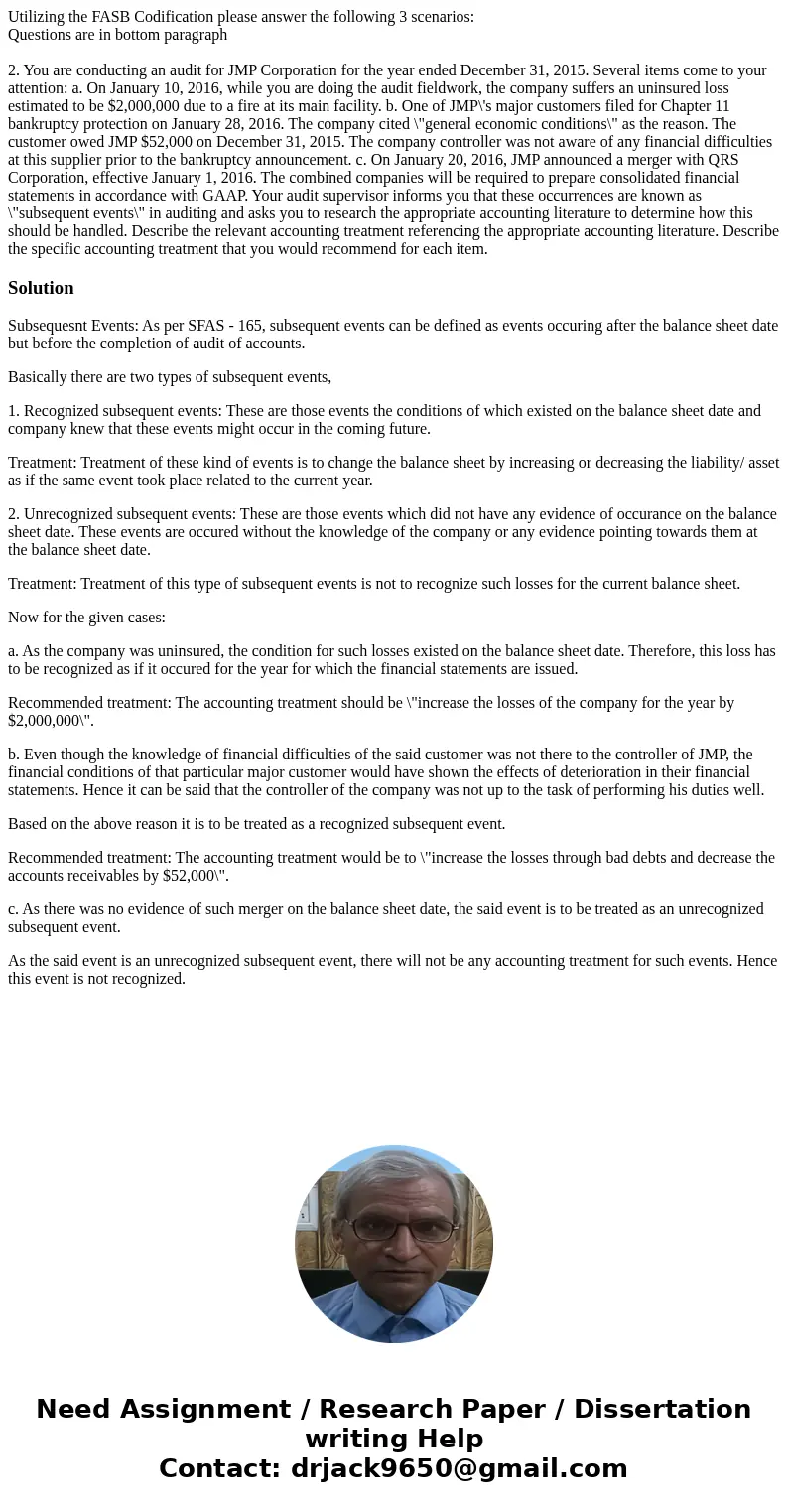Utilizing the FASB Codification please answer the following
Solution
Subsequesnt Events: As per SFAS - 165, subsequent events can be defined as events occuring after the balance sheet date but before the completion of audit of accounts.
Basically there are two types of subsequent events,
1. Recognized subsequent events: These are those events the conditions of which existed on the balance sheet date and company knew that these events might occur in the coming future.
Treatment: Treatment of these kind of events is to change the balance sheet by increasing or decreasing the liability/ asset as if the same event took place related to the current year.
2. Unrecognized subsequent events: These are those events which did not have any evidence of occurance on the balance sheet date. These events are occured without the knowledge of the company or any evidence pointing towards them at the balance sheet date.
Treatment: Treatment of this type of subsequent events is not to recognize such losses for the current balance sheet.
Now for the given cases:
a. As the company was uninsured, the condition for such losses existed on the balance sheet date. Therefore, this loss has to be recognized as if it occured for the year for which the financial statements are issued.
Recommended treatment: The accounting treatment should be \"increase the losses of the company for the year by $2,000,000\".
b. Even though the knowledge of financial difficulties of the said customer was not there to the controller of JMP, the financial conditions of that particular major customer would have shown the effects of deterioration in their financial statements. Hence it can be said that the controller of the company was not up to the task of performing his duties well.
Based on the above reason it is to be treated as a recognized subsequent event.
Recommended treatment: The accounting treatment would be to \"increase the losses through bad debts and decrease the accounts receivables by $52,000\".
c. As there was no evidence of such merger on the balance sheet date, the said event is to be treated as an unrecognized subsequent event.
As the said event is an unrecognized subsequent event, there will not be any accounting treatment for such events. Hence this event is not recognized.

 Homework Sourse
Homework Sourse